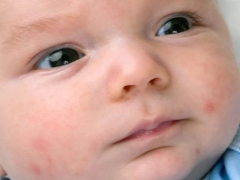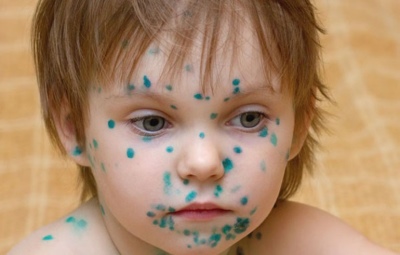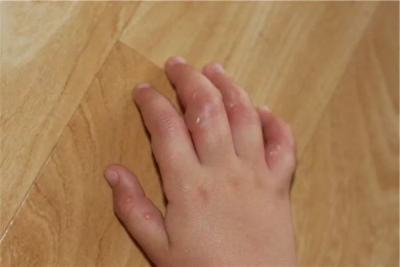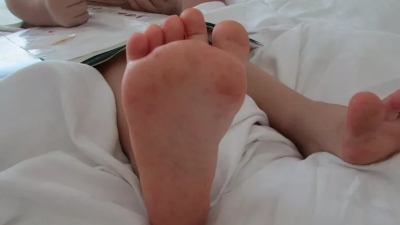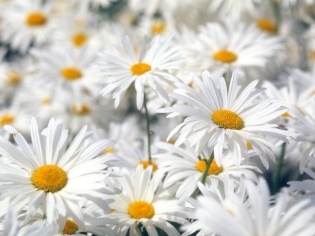Blistering on baby’s body
The appearance of blisters on the body of a baby is a symptom that cannot be ignored. He does not always talk about something alarming, but it is necessary to understand the cause of the rash, so as not to miss the situation in which the child needs immediate help. What blisters can signal we will cover in this article.
What it is?
We used to put in the word "blister" a lot of different ideas. This is a watery rash, and abscess, and the formation of an incomprehensible nature with or without a head, and pimple. Medicine answers this question unequivocally. Blistering, according to the terminology, is a celiac-free formation that appears as a result of an acute inflammatory process in one of the outer layers of the skin.
With real blisters (not to be confused with rashes, herpes and other skin manifestations!) The term of "life" is very short - from several minutes to several hours, they rarely linger for a day. They appear and disappear very quickly. All blisters are pink, round or oval. The wheal slightly protrudes above the skin, has a dense structure. Almost always, the blisters are quite tangible for a person - they itch, itch, pinch and deliver a fairly large range of other, not the most pleasant sensations.
Possible reasons
The main reason for the appearance of a blister or several similar formations is a point effect on the skin, a lesion of the papillary dermis. This is possible with insect bites, contact with toxic substances of both natural and artificial origin. Quite often the appearance of such formations on the skin - a sign of an allergic reaction.
Blistering spots that appear as a result of a burn after intense tanning cannot be considered blistering. Attempts to rank them in this category of formations are a common misconception. All this is true, in terms of terminological medical dictionaries. In fact, parents attribute to the blisters any formation, not only floorless, but also filled with watery content, pus, and blood. And they seek advice just about “blisters” in the broad sense of the word, that is, in the philistine.
Much of the reasons can tell the place of dislocation of skin formations. Let's take a closer look at the most common situations.
On arms and legs
Blisters on the hands can be the result of a banal violation of hygienic rules and requirements. If the child rarely washes his hands, then pathogenic organisms can get into the microcracks, which cause a slight local inflammation. It is usually easy to remedy the situation by adjusting regular hygiene procedures, teaching the child how to properly wash their hands.
If the blisters are filled with liquid, they are visually similar to those that appear, if the child burns his hands with nettles, then it is a question of urticaria. - local manifestation of an allergic reaction. It can be both for food and drugs. If the urticaria is localized only on the hands, then, most likely, the child had contact with something allergenic through touch (he found detergent in the bathroom, pulled his hands into cleaning powder, etc.).
In this situation, the hands should be thoroughly washed and an anti-allergic drug should be given to the child, for example "Suprastin". And, of course, you need to find a source of allergy and prevent further attempts by the child to reach where it should not be.When the urticaria, which covers not only the hands, but also other parts of the body, you must show the child to the doctor. Blisters on arms and legs, elbows, and shoulder may be signs of insect bites. Relieve itching and discomfort will help "Fenistil".
In nature, there are practically no infectious diseases for which a characteristic rash on the handles or only on the legs would be typical. However, it is still necessary to show the child to the doctor if the blisters did not disappear after a day.
Whole body
This is a more dangerous situation. If blisters appear all over the body, then with a high degree of probability the child may have an infectious disease. You should immediately call a doctor. It is better not to drive a child to the clinic, since the lion’s share of such diseases, accompanied by skin rashes, is contagious.
With a rash that resembles pink, red, serous blisters, as well as watery and other contents, the following diseases occur:
- chickenpox and other herpes infections;
- erysipelas;
- follicular sore throat (with blistering formations on the palate and tonsils);
- streptoderma.
Self-treatment in this situation is not necessary, especially if there are other symptoms of infection - fever, nausea, diarrhea or vomiting, respiratory symptoms, which include a runny nose, cough, shortness of breath. The younger the child, the harder it is to fight against viral and bacterial infections, and therefore the help of a doctor is a prerequisite for a successful recovery.
On the palms and fingers
The appearance of blisters on the palms can be a sign of eczema associated with blockage of sweat glands. It is called dyshidrosis. In addition, the characteristic rash on the palms may be present in a child during the period of scarlet fever disease, but it is unlikely to surprise parents, since all the other symptoms of this viral disease appear much earlier.
In fast-growing adolescents and children of primary school age, blisters on the palms of the palms may indicate a lack of vitamins, as the whole body is growing rapidly. An experienced doctor will immediately determine this and advise a complex of vitamins, appropriate for age.
On the feet and heels
Most often, blisters that choose such an unusual place of dislocation are a sign of a fungal disease. You can get rid of it by applying topically antifungal ointments, and giving the child antifungal drugs inside. Choose a medicine, determine the duration of the course of treatment of mycosis, the dosage for the child should be a dermatologist.
On the heels, the blisters are most often of mechanical origin. The cause of corns is uncomfortable shoes. Such formations do not need treatment, it is enough to choose a more comfortable pair of shoes.
On the face
Blisters on the face can be a sign of allergies and one of the manifestations of an infectious disease. It is important to pay attention to the associated symptoms. If there is a fever, there are signs of intoxication, ARVI, flu, then it is likely rubella, measles, chickenpox, scarlet fever, diphtheria. To understand the origin of the formations on the skin of the face alone is quite difficult.
For most infectious diseases, a rash on the cheeks or on the forehead is unusual. It usually covers other parts of the body. The exception is simple virus herpesin which small blisters with watery content appear mainly on the lip, in the area of the nasolabial triangle, less often in the nose.
On the buttocks and on the scrotum
Small blisters with fluid inside the buttocks and scrotum are often mistaken for prickly heat, however, the reason in most cases lies in the genital herpes. This disease is treated with herpes medicine such as «Acyclovir». But it is completely impossible to recover from it, because a virus that once entered the body remains in it forever. Some fungal diseases affecting the genitals also tend to manifest as a rash in a causal place.Poor quality underwear, rubbing the child's crotch, non-compliance with the rules of personal hygiene - all this can also be the cause of the appearance of tumors on the skin.
On the back
The reasons for which unpleasant rash may appear on the child on the back are quite numerous. In combination with other parts of the body, a rash may indicate contact dermatitis, a severe allergic reaction, and numerous infectious diseases. So, the accumulation of bubbles with a liquid in the form of a tape or a strip often appear with shingles. In a newborn, small blisters in the area of the shoulder blades, on the elbows, on the folds and in the skin folds can be a sign of overheating, prickly heat.
All of the above problems, except for babysitting in babies, need the advice of a qualified doctor. Prickly heat is treated by the creation of optimal conditions under which the baby will not sweat, as well as baths with a string, decoction of chamomile.
Practical advice
- Blister complaints should always be accompanied by a detailed description of other symptoms. Only such explanations will help the doctor quickly understand what is happening and give recommendations on treatment, if necessary. If strange formations appear on the skin, if they have not gone through 10-15 hours on their own, measure the temperature of the child, examine the condition of the mouth and throat, fix all the places that have a rash, then call the doctor.
- Bright red and purulent blisters before examination by a doctor can be treated with an antiseptic that does not contain alcohol and iodine, for example, "Miramistin». It is not necessary to pierce anything, it is not necessary to squeeze it out, since it damages the skin, and the pathogenic flora can penetrate through the wound. Before examining anything else, it is not necessary to lubricate the formations so that the doctor can see the true clinical picture.
- In children of the first year of life, the appearance of various pimples and blisters, which quickly disappear - a familiar phenomenon, because their skin is very delicate, and it is just beginning to adapt to aggressive environmental stimuli. If such formations appeared after sleep, they are not of a mass character, they are not accompanied by temperature, there is nothing terrible about it. You need to wait a bit and everything will pass.
To which doctor to address with such a problem. What drugs and ointments will help get rid of this disease. Video tips for caring parents.
